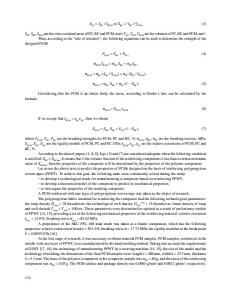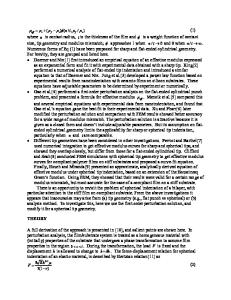Thermal and elastic properties of Ge-Sb-Te based phase-change materials
- PDF / 454,941 Bytes
- 8 Pages / 612 x 792 pts (letter) Page_size
- 66 Downloads / 219 Views
Thermal and elastic properties of Ge-Sb-Te based phase-change materials P. Zalden1,9, C. Bichara2, J. v. Eijk1,9, R. P. Hermann3,4, I. Sergueev10, G. Bruns1,9, S. Buller5, W. Bensch5, T. Matsunaga6,7, N. Yamada8,7 and M. Wuttig1,9 1
I. Physikalisches Institut (IA), RWTH Aachen University, Aachen, Germany Centre Interdisciplinaire de Nanoscience de Marseille, CINaM – CNRS and Aix-Marseille University, Campus de Luminy, 13288 - Marseille - Cedex 9 - France 3 Jülich Centre for Neutron Science JCNS and Peter Grünberg Institut PGI, JARA-FIT, Forschungszentrum Jülich GmbH, 52425 Jülich, Germany 4 Faculté des Sciences, Université de Liège, 4000 Liège, Belgium 5 Institut für Anorganische Chemie, Christian-Albrechts-Universität zu Kiel, 24098 Kiel, Germany 6 Materials Science and Analysis Technology Centre, Panasonic Corporation, 3-1-1 Yagumo-Nakamachi, Moriguchi, Osaka 570-8501, Japan 7 Japan Synchrotron Radiation Research Institute, Hyogo, Japan 8 Digital & Network Technology Development Centre, Panasonic Corporation, Osaka, Japan 9 JARA-FIT, RWTH Aachen, 52056 Aachen, Germany 10 European Synchrotron Radiation Facility, 38043, Grenoble, France 2
ABSTRACT Phase-change materials undergo a change in bonding mechanism upon crystallization, which leads to pronounced modifications of the optical properties and is accompanied by an increase in average bond lengths as seen by extended x-ray absorption fine structure (EXAFS), neutron and x-ray diffraction. The reversible transition between a crystalline and an amorphous phase and its related property contrast are already employed in non-volatile data storage devices, such as rewritable optical discs and electronic memories. The crystalline phase of the prototypical material GeSb2Te4 is characterized by resonant bonding and pronounced disorder, which help to understand their optical and electrical properties, respectively. A change in bonding, however, should also affect the thermal properties, which will be addressed in this study. Based on EXAFS data analyses it will be shown that the thermal and static atomic displacements are larger in the meta-stable crystalline state. This indicates that the bonds become softer in the crystalline phase. At the same time, the bulk modulus increases upon crystallization. These observations are confirmed by the measured densities of phonon states (DPS), which reveal a vibrational softening of the optical modes upon crystallization. This demonstrates that the change of bonding upon crystallization in phase-change materials also has a profound impact on the lattice dynamics and the resulting thermal properties. INTRODUCTION The fast switching mechanism of phase-change materials has attracted scientific interest since it was first reported by S. Ovshinsky in 1968 [1] and later employed for optical data storage, using the contrast in optical reflectivity to store information [2]. With the increased significance of mobile electronic devices and more demanding storage requirements, phase-change memories are also considered for non-volatile electronic
Data Loading...










